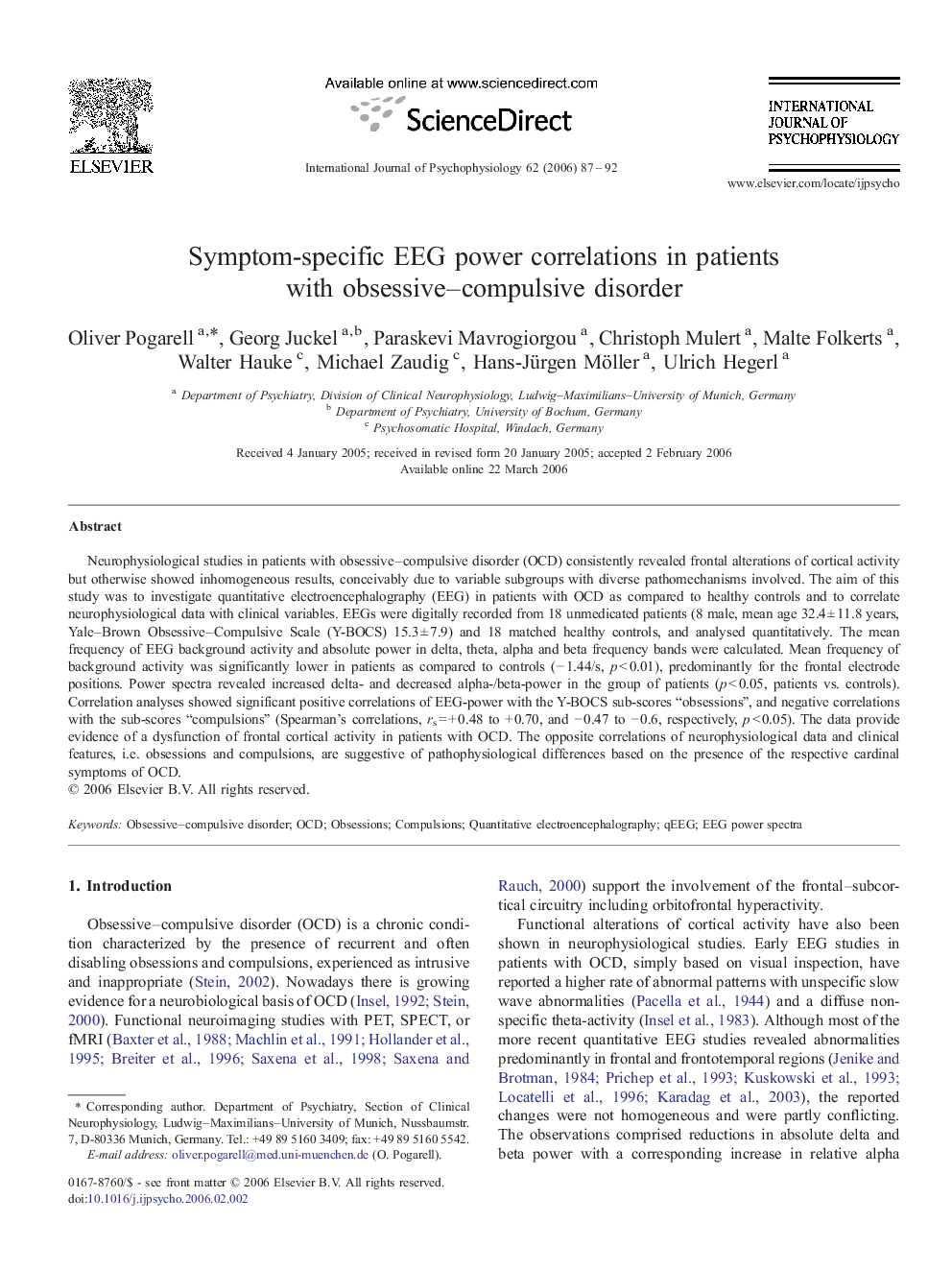| Article ID | Journal | Published Year | Pages | File Type |
|---|---|---|---|---|
| 931332 | International Journal of Psychophysiology | 2006 | 6 Pages |
Neurophysiological studies in patients with obsessive–compulsive disorder (OCD) consistently revealed frontal alterations of cortical activity but otherwise showed inhomogeneous results, conceivably due to variable subgroups with diverse pathomechanisms involved. The aim of this study was to investigate quantitative electroencephalography (EEG) in patients with OCD as compared to healthy controls and to correlate neurophysiological data with clinical variables. EEGs were digitally recorded from 18 unmedicated patients (8 male, mean age 32.4 ± 11.8 years, Yale–Brown Obsessive–Compulsive Scale (Y-BOCS) 15.3 ± 7.9) and 18 matched healthy controls, and analysed quantitatively. The mean frequency of EEG background activity and absolute power in delta, theta, alpha and beta frequency bands were calculated. Mean frequency of background activity was significantly lower in patients as compared to controls (− 1.44/s, p < 0.01), predominantly for the frontal electrode positions. Power spectra revealed increased delta- and decreased alpha-/beta-power in the group of patients (p < 0.05, patients vs. controls). Correlation analyses showed significant positive correlations of EEG-power with the Y-BOCS sub-scores “obsessions”, and negative correlations with the sub-scores “compulsions” (Spearman's correlations, rs = + 0.48 to + 0.70, and − 0.47 to − 0.6, respectively, p < 0.05). The data provide evidence of a dysfunction of frontal cortical activity in patients with OCD. The opposite correlations of neurophysiological data and clinical features, i.e. obsessions and compulsions, are suggestive of pathophysiological differences based on the presence of the respective cardinal symptoms of OCD.
